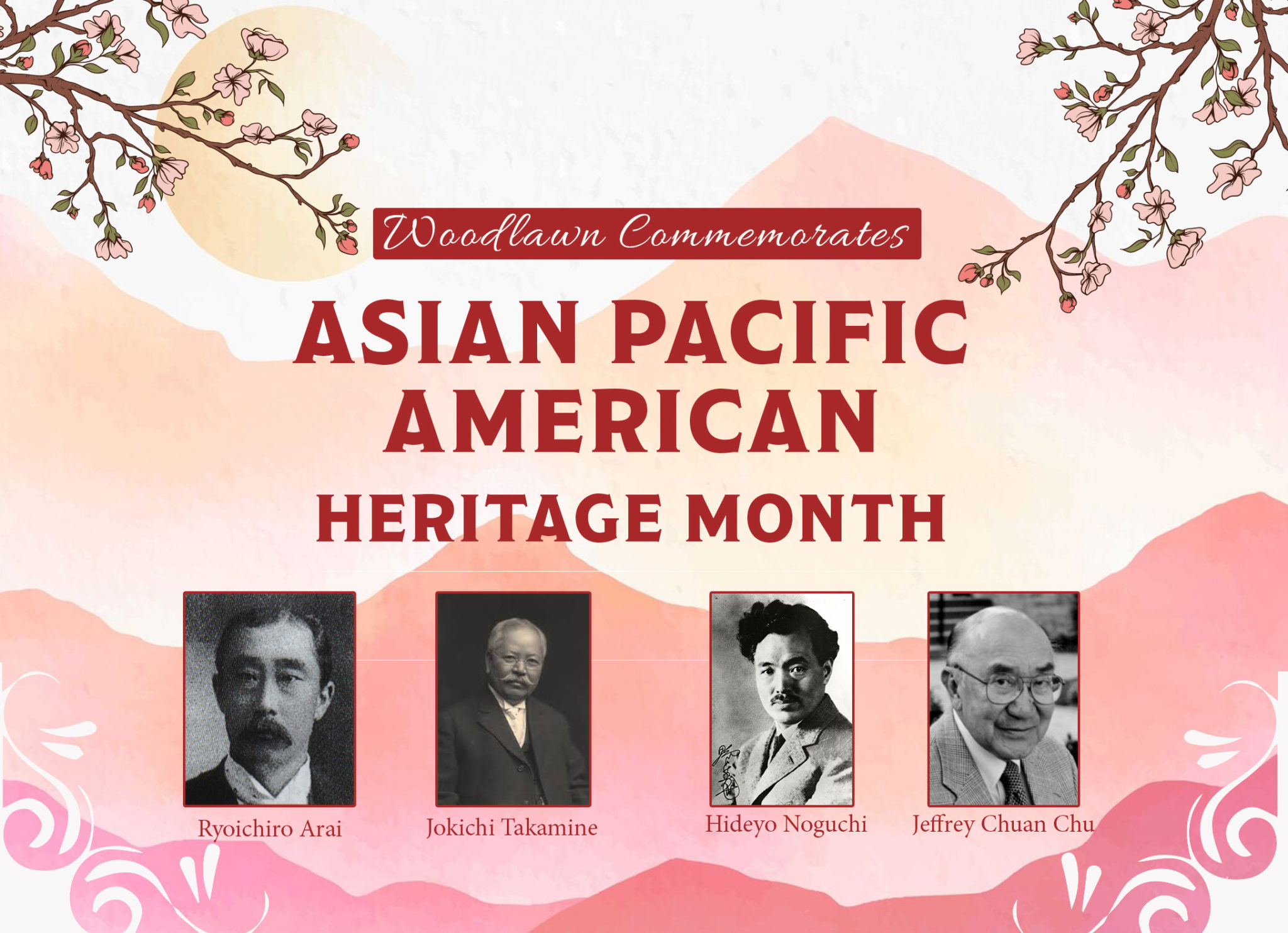
During the month of May, we celebrate the cultures, traditions, and history of Asian Americans and Pacific Islanders in the U.S. The first Japanese immigrants came to the U.S. in May 1843 and it was during the same month in 1869 that the transcontinental railroad was completed, a major feat achieved primarily through the hard work of Chinese immigrants.
An early Chinese immigrant memorialized at Woodlawn is cook and cabin steward Ah Sam (1853-1882), who traveled on the ill-fated USS Jeanette voyage with Commander George Washington DeLong. After the remains of the crew were found in Siberia, they were brought to Woodlawn and laid to rest in 1884.
Sorakichi Matsuda (1859-1891) was born in Japan and was trained as a sumo wrestler. In 1883, he came to the U.S. to wrestle in major cities. A fierce competitor, he drew large crowds and performed in prominent venues. The athlete was so famous his image was featured on a trading card, which is now among the artifacts in the collection of the Metropolitan Museum of Art.
The head of the Arai family, Ryoichiro Arai (1855-1939) was among the early leaders in the effort to introduce Japanese culture to the people of New York. He was a founder of the Japan Society and made his fortune in silk production. His son, Yoneo Arai (1889-1980), President and Chairman of the Yamaichi Securities Company, was also involved in cultural exchange between Japan and the U.S., serving as Vice President of New York’s Japan Society. During World War II, he taught Japanese to U.S. Army students at Yale and acted as a key member of Harvard’s committee for the Far Eastern Studies Department.
The Japanese chemist credited with founding the Nippon Club, located at 161 West 93rd Street in Manhattan, is entombed in a mausoleum with a beautiful stained glass window depicting Mount Fuji, which is considered the sacred symbol of Japan. Dr. Jokichi Takamine (1854-1922) was among those who generously donated the beautiful cherry blossom trees that surround the tidal basin in Washington, D.C. Each year thousands of visitors go to the nation’s capital to admire the delicate pink flowers. In 1901, he isolated and purified adrenaline, a major breakthrough for those suffering from asthma.
At the end of May, representatives of the Japanese Medical Society of America and the Hideyo Noguchi Foundation gather at Woodlawn to remember the legacy of Dr. Hideyo Noguchi (1876-1928), a dedicated bacteriologist, who “through his devotion to science,” “lived and died for humanity.” Brought to America from Inawashiro, Fukushima to work as a research assistant, the young scientist took a research position with the Rockefeller Institute of Medical Research. Tragically, he succumbed to yellow fever while working to find ways to combat the spread of the deadly virus. Considered a national hero in Japan, Noguchi’s image is featured on the 1,000 yen note.
Another prominent figure noted for his important discoveries was Jeffrey Chuan Chu (1919-2011), a pioneering computer engineer. Born in Tianjin, China, Chu studied at the University of Pennsylvania. His interest in computer science led him into a career in which he joined the team that designed the world’s first electronic computer. In 1981, he received the first Computer Pioneer Award from the Institute of Electrical and Electronics Engineers Computer Society. In addition to his contributions to the world of computers, Chu was is remembered as a “passionate crusader for U.S.-China cultural exchange.”
When you walk the grounds of the Woodlawn Cemetery, you will come across a pair of foo dogs—Chinese guardian lions—set in front of the Yung family mausoleum to protect the memory of those at rest. Traditional lanterns made of stone serve as memorials for Japanese and Korean families honoring their cultural heritage. Chrysanthemums, the imperial seal of Japan, are incorporated into several monuments and bronze plaques.
For over 150 years, The Woodlawn Cemetery has served all New Yorkers, embracing a diversity of cultures while providing a beautiful landscape to showcase the collection of memorials celebrating the rich heritage of over 90,000 lot owners.
